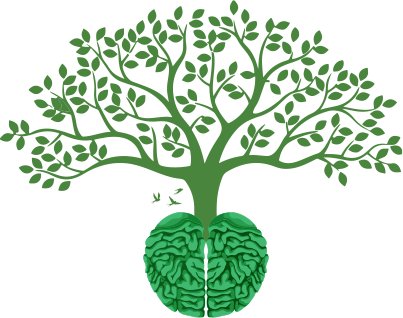
When we think about depression, we often associate it as a crippling disorder, characterised by the inability to leave bed, a lack of responsibilities being attended to, and an apparent aura of gloominess. This indeed is a real and severe presentation of the illness, but there exists another, equally unsuspected form that is equally insidious: high-functioning depression.
Table of Content:-
CHECK YOUR
MENTAL HEALTH

People with high-functioning depression will typically seem to get on. They are working, having relationships, and even meeting big milestones. Their lives appear to be picture-perfect on the outside. Yet, below the surface, they are fighting the same dark impulses, relentless sadness, and suffocating exhaustion that define more obviously visible symptoms of depression. This lack of connection between surface appearance and inner distress makes high-functioning depression especially difficult to spot, both for the individual suffering from it and those around them.
So, what precisely is high-functioning depression, and how can we distinguish it from being merely busy or experiencing transient low moods? In an exclusive interaction with the editorial team of Onlymyhealth, our expert, Dr Nikhil Nayar, Psychiatrist, Sharda Hospital - Noida, explained everything in detail. Here is what you need to know!
What Is High-Functioning Depression?
Dr Nayyar highlighted that "high-functioning depression" is not a legitimate clinical diagnosis in the Diagnostic and Statistical Manual of Mental Disorders (DSM-5). Rather, it tends to equate to what clinicians call Persistent Depressive Disorder (PDD) or dysthymia. PDD is defined as a long-lasting, low-grade depressed mood that is present for two years or more in adults (and one year or more in children and adolescents).

Also Read: 6 Fruits That Have More Vitamin C Than Oranges And How To Incorporate Them
The "high-functioning" component occurs because people with PDD will learn to deal with their symptoms in a manner that enables them to continue fulfilling their daily duties. They may find ways to plow through their exhaustion, cover up their depression in public, and prod themselves to get things done on time.
Identifying the Signs of High-Functioning Depression
Though appearances may be misleading, there are usually faint but insistent internal conflicts that characterise high-functioning depression. These may include:
- Low mood that persists
- Loss of pleasure or interest (Anhedonia)
- Changes in sleep or appetite
- Noticeable weight fluctuations
- Fatigue and low energy
- Low self-esteem
- Trouble concentrating or deciding
- Feelings of hopelessness
- Irritability or anger
- Social withdrawal (Stealthy)
Also Read: Real Coconut Water vs Packaged Scam: Here Is How The Sugary Chemical May Harm Your Overall Health

How To Differentiate Between High-Functioning Depression And Ordinary Life
It is important to distinguish these chronic symptoms from transient low moods or the ordinary stress of a full life. Some of the ways to do so are:
1. Duration and Intensity
Though everyone feels sometimes sad or tired, the manifestations of high-functioning depression are chronic (minimum two years duration for PDD) and more severe even if they do not interfere with daily functioning.
2. Impact on Inner Well-being
Even when someone appears to be successful, the internal conflict goes a long way in degrading their mental and emotional well-being. They end up feeling permanently drained, unjoyful, and self-critical.
3. Deep-Rooted Beliefs
People suffering from high-functioning depression tend to have negative underlying core beliefs concerning themselves and the world, which perpetuate low mood and self-blame. These are mostly entrenched.
4. Masking and Coping Strategies
Another distinction is the effortful, either conscious or unconscious, to suppress their true feelings and press through their problems. This "holding it together" is often depleting in and of itself.
Bottomline
Living with high-functioning depression is like training for a marathon with weights tied around your ankles. Though the finish line may appear within reach, the consistent exertion and weighty responsibility under the radar can be life-draining. The key to stopping the cycle of silent suffering, breaking the silence, and finally beginning a journey towards true well-being is identifying the signs and learning the subtleties of this very insidious illness. You don't have to go it alone and reach out for help if you need to!
Also watch this video
How we keep this article up to date:
We work with experts and keep a close eye on the latest in health and wellness. Whenever there is a new research or helpful information, we update our articles with accurate and useful advice.
Current Version